"People who are knowledgable are said to "know their onions". It's a great phrase, yet nobody knows exactly where it comes from. It's just one of those little ironies in life that make you want to weep." Guy Browning

This is my lovely grandson peeling an onion in the COVID cooking class days. The swimming goggles were his idea. It's not a novel idea but nevertheless he thought of it all on his own. They say they are better than glasses because of a better fit. I just wear glasses - well I have to - and unless I am slicing heaps of them I don't suffer too much with the weeping. Other suggested remedies are freezing them, chewing a matchstick - no that doesn't work - I tried it when young. Or cut them under water - tricky. Why do they make you cry?
"Tears are an onion’s self-defence mechanism. When an onion is cut, it releases a volatile gas called propanethial S-oxide. This causes the burning sensation in your eyes and deters animals from damaging the bulb." Dr. Ken Ng

Food scientists have been working away on the problem for decades and back in July tearless onions arrived at Woolworths under the name Happy Chop at twice the price of normal onions. However:
“Tearless onions are specifically bred to have lower levels of amino acid sulfoxides which propanethial-S-oxide is derived from. However, amino acid sulfoxides contribute to the pungent, sharp and slightly sweet flavour of raw onions … Thus, tearless onions will be blander in taste and smell.” Dr. Ken Ng
Which led to Guardian reporter Yvonne C. Lam, testing them out in an Indian restaurant where they were turned into onion bhajis alongside normal ones, to say:
"I think of the tearless onion. Over three decades, humankind has meticulously crossbred out its tearful capabilities. But in doing so we have stripped it of its essential onion-ness. How can we celebrate what we have gained when we have lost so much? I mourn. But strangely, I cannot cry." Yvonne C. Lam
They are currently out of stock on the Woolworths website. Does this mean that they are an expensive failure, or is it merely one of those weird supply problems that seem to be happening now and then at the moment? I think I'm hoping it's an expensive failure, even though that's sad for all of those scientists.
Anyway, I'm cooking some kind of beef stew this evening to use up some tomatoes, and inevitably onions will be involved. Onions go into almost everything I make. As I was thinking about what to do with this slice of rump steak and some tomatoes, which need using, I pondered on the baking or the braising options, and also how would I cut up the onions? Chopped small, sliced, chunks, or in quarters or eighths, even halves. Bigger bits of roasting, probably slices if braising. Which gave me the inspiration for this post. There are many ways you can deal with onions before cooking them.

Onions left whole (or almost)
As I was flicking through the new Woolworths Fresh Ideas magazine I saw this recipe Spiced rice-stuffed onions and realised that as well as all those ways of cutting up onions, you actually don't have to cut them up at all.

Well I suppose for stuffed onions, you do have to do a bit of cutting - you have to slice off the top and take out the centre, which is generally then chopped up with the stuffing whatever it might be. The ones on the right are Sausage stuffed onions from April Bloomfield. which look to me as if rather less of the top has been sliced off. So Ok you are not slicing the onions and so saving yourself some tears, but stuffing anything is always a bit of a faff.

It's even more of a faff if you do it like Richard Olney. I think I've mentioned this recipe before. It's from his wonderful book - one of my favourites - Provence the Beautiful Cookbook - and I've always wanted to give it a go, but it's really daunting, because you first of all have to soften the onions and then you have to peel off the layers - the leaves - yes they are leaves - which are then rolled up around your stuffing, and baked in a tomato sauce. I think you would need to do it on a day you have nothing much else to do.
At the other end of avoiding the weepy slicing is Nigel Slater. Well he's not the only one I'm sure, but I found two of his recipes to demonstrate. In this case you just peel the onions, and then put them in a roasting dish with some kind of sauce. Actually it's not quite that simple I think for at least one of these two because you boil them first.
"The essential point is to simmer them long enough in their bay-scented stock to be on the verge of collapse, rendering their layers soft and giving, before putting them in the oven for their final roast." Nigel Slater
One looks a bit like cauliflower cheese, and the other is rather more Ottolenghi like - and I'm sure he has versions too. So here they are: Roast onions, miso and sesame and Baked onions with Parmesan and cream. My mum used to just chuck a few whole peeled onions around the Sunday roast, and very good they were too.
Or you can simply boil them - in this case, on The Kitchen is My Playground website in milk and butter. It is touted as a traditional New England recipe and I'm guessing that yes indeed housewives of old did indeed do this. And let's not forget pickled onions - the small whole ones. There's a lot of peeling involved here, and I always think that the small onions are actually more tear inducing than big ones. But it's a pretty easy process and at the end you have lovely jars to either give away or store in your pantry for emergency.
Halved onions
Here you do have to cut into your onions, but not much. Then you mostly roast them and/or glaze them, as in Balsamic glazed onions on the Taste website, or halve them the other way and roast them as on the Kevin is Cooking website - probably with things to spice them up as well.
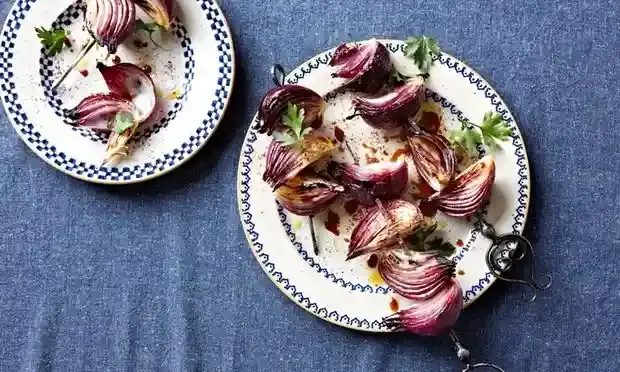
Onion petals
I think that's what they call them anyway. In this case you cut your onions lengthways into quarters, and then separate - or not - the layers - as here in Turkish pomegranate onions from Olia Hercules. Now they may have been doing this sort of fancy presentation in the Middle East for centuries, but I think it's a rather more modern, even trendy thing to do for the rest of us. And yes indeed there are heaps of recipes out there - chefs love them because they look great on the side of your artfully arranged plate - so here are a few options - there are lots more: Charred onion petals - Jeremy Fox/Bon Appétit; Sweet and sour onion petals - Ottolenghi; Burnt onions and bavette - Ed Smith
The Americans seem to slather their petals in flavoured batters and deep fry them, although a few more health conscious ones used the air fryer or the oven. Not a healthy option, however, although pretty delicious probably and, I suppose not that far away from those onion bhajis.
Which brings me to:

Onion rings
Because if you slice your onions in rings - a tricky process by the way, because there is no flat bottom to rest your onion on, and when you are getting to the end or even the middle they tend to slide around a lot. The most common thing to do with onion rings, other than decorative sprinklings over things is Beer battered onion rings.

You can of course, roast rather than fry but fundamentally you are doing the same thing. You can of course cut across the whole lemon in thick rings and, not separating out the rings, roast them as you would those halves or petals. Or indeed grill them as here in Nigel Slater's Grilled Onions, chickpea purée with za’atar and lemon oil - "a golden tangle of onions from the grill, seasoned with za’atar, and its notes of sesame and wild thyme."
Now doesn't that look gorgeous.

Sliced onions
So now we are at the tearful stage. Imagine being a kitchen hand and slicing onions all day. And do you remember that lovely scene in Julie and Julia where Julia Child is practising slicing onions so that she can slice at speed like a pro. I am slow. Even my gourmet friend Monika commented on this as she watched me slice some recently. It's just something I never learnt, and my mother never used to do it on a chopping board anyway. She would hold the halved and peeled onion in her hand and slice with a knife in a vertical motion. That's how I learnt. These days I peel and half the onion lengthwise and then place the flat surface on the board so that I can slice the onion more easily. The thickness of the slices depends what I am going to do with them I suppose. If you want them really fine you can do them on a mandoline of course.

Perhaps the trendiest use of sliced onions is the ubiquitous pickled red onion. You can do it very quickly and use almost immediately or store in the fridge for a while. Basically you slice our onions, thinly but in whatever shape you fancy, and then douse with vinegar - or some kind of acid like lemon juice I suppose - plus some spices or herbs and there you have something to perk up whatever it is you are serving. Seen on salads everywhere these days. I have to say that I have been making an onion side salad for decades to go with curry which is basically just sliced onion plus, depending on what's available one or two of tomatoes, radishes, cucumber with a sprinkling of herbs on top.
And there are thousands of other things you can do with sliced onions, from onion soup to bhajis and the dreaded caramelised onions. Not to mention - my favourite perhaps - pissaladière and as a basis for just about every casserole, stew, curry, tagine that you can think of. So if you suffer, then slap on the goggles. Really there is almost nothing you can cook without onions.
Chopped onions
Almost there - chopped. Well you can do this any old how. Just cut in half and then chop away, either in straight criss-cross lines or anyhow you like, as large or as small as you like - you can even put them in some kind of blender or food processor.
Puréed onions - last of all
Purée them raw and then squeeze for the juice, or use as they are. Or you can cook them first and then purée them.
However, you slice or dice your onion, and whether you suffer from tears or not, onions are absolutely indispensible in the kitchen and the smell of cooking onions tells you that something good is coming. There is hardly a meal you can cook that does not use onions in some form or other even if it's just a touch at the beginning. "It is hard to imagine a civilization without onions", said Julia Child and indeed I cannot think of a single cuisine that does not uitlize them in some way or another. And philosophers love them too:
"Life is like an onion. You peel it off one layer at a time, and sometimes you weep." Carl Sandburg

"The onion, in its satin wrappings, is among the most beautiful of vegetables; and it is the only one that represents the essence of things. It can almost be said to have a soul." Charles Dudley Warner
The painting is by Renoir.
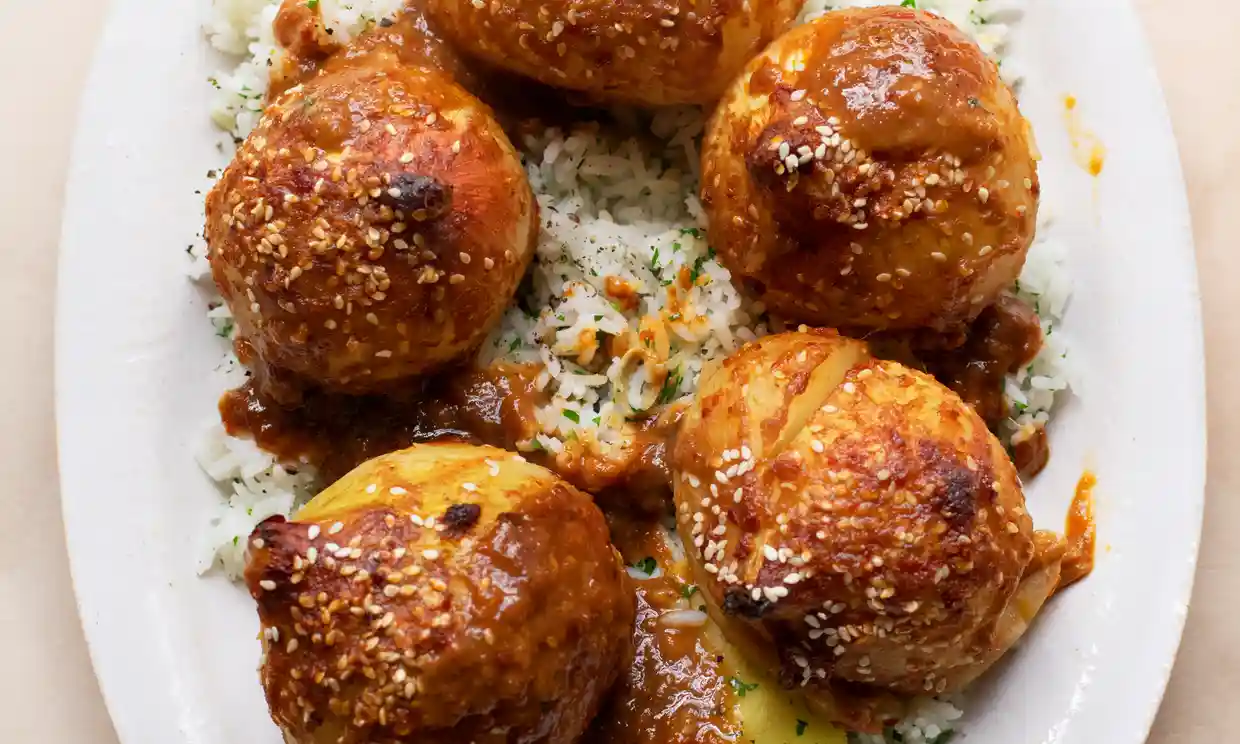
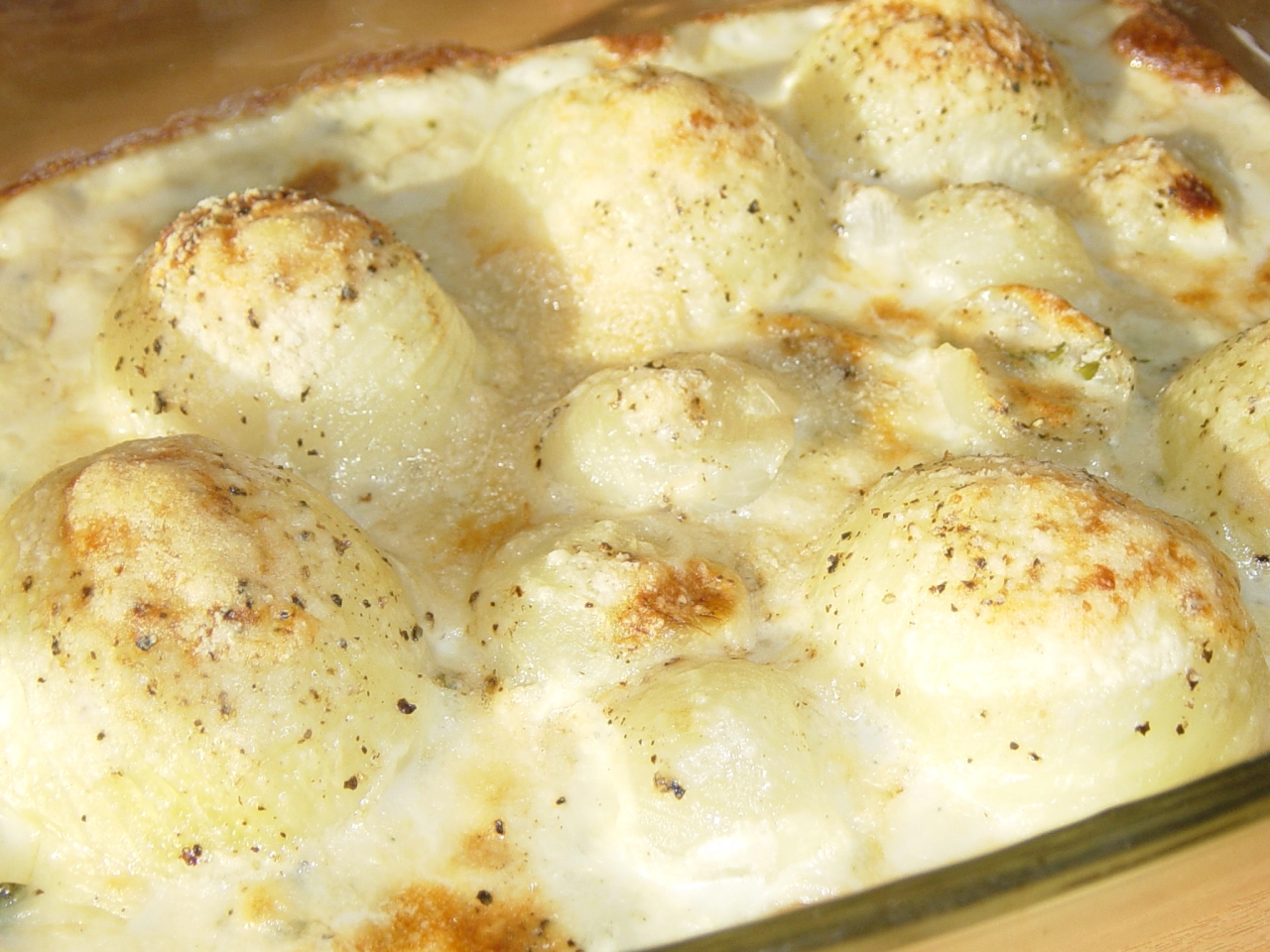








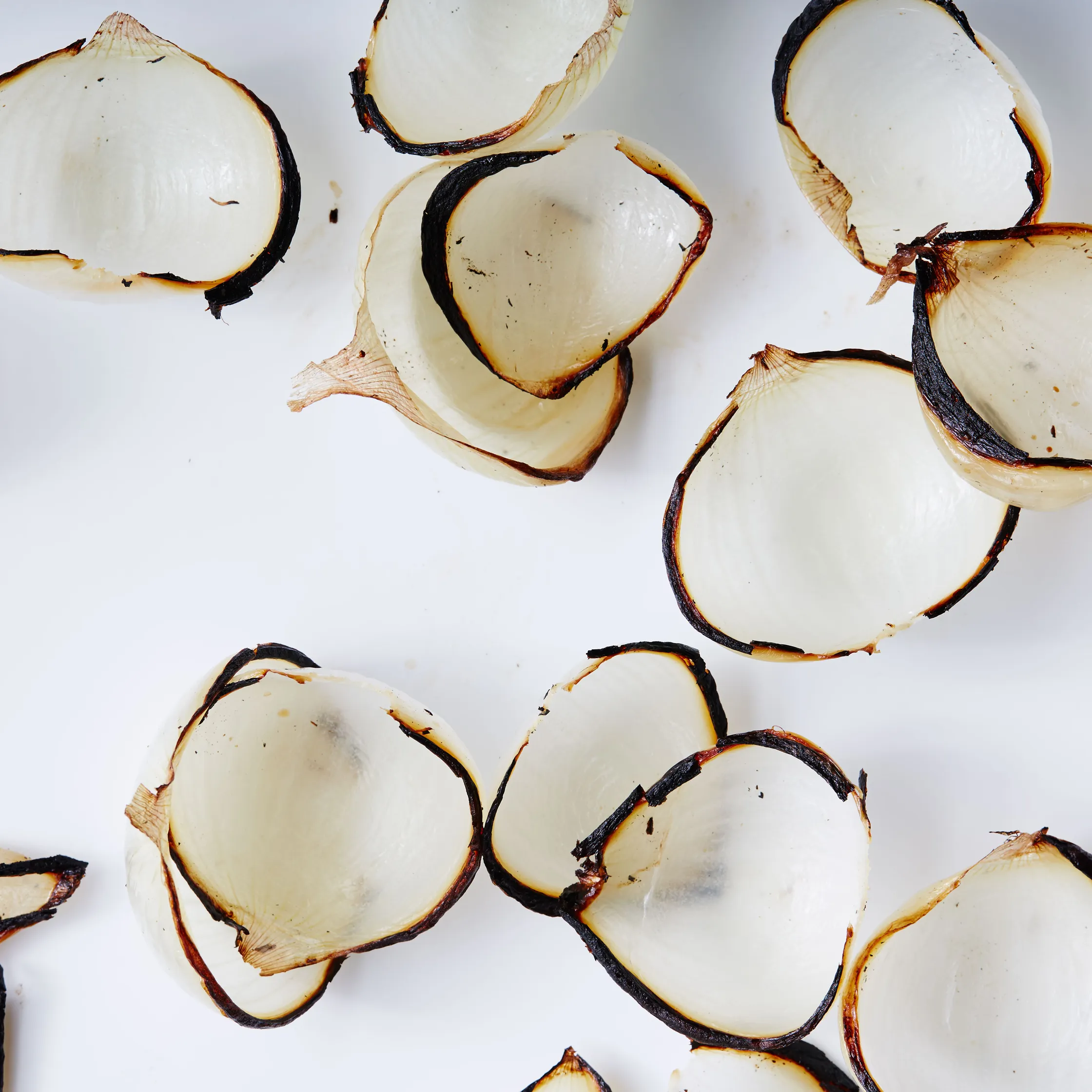







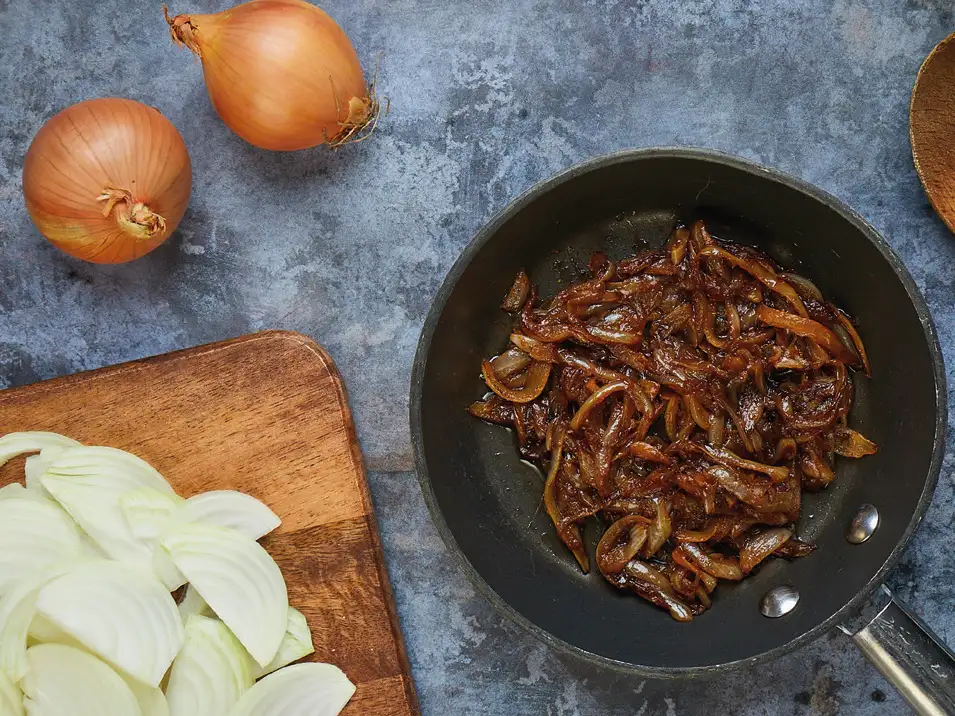


Comments